Hyundai Kona vs Polestar 4 – Differences & prices compared
Compare performance, boot space, consumption and price in one view.
Find out now: which car is the better choice for you – Hyundai Kona or Polestar 4?
The Hyundai Kona (SUV) comes with a Petrol, Full Hybrid or Electric engine and Manuel or Automatic transmission. In comparison, the Polestar 4 (SUV) features a Electric engine with Automatic transmission.
When it comes to boot capacity, the Hyundai Kona offers 466 L, while the Polestar 4 provides 526 L – depending on how much space you need. If you’re looking for more power, decide whether the 218 HP of the Hyundai Kona or the 544 HP of the Polestar 4 suits your needs better.
In terms of consumption, the values are 14.60 kWh4.50 L per 100 km for the Hyundai Kona, and 17.80 kWh for the Polestar 4.
Price-wise, the Hyundai Kona starts at 23100 £, while the Polestar 4 is available from 53100 £. Compare all the details and find out which model fits your lifestyle best!
Hyundai Kona
The Hyundai Kona blends a bold design with a versatile interior, making it a standout choice in the compact SUV market. Its crisp handling and responsive steering provide an engaging driving experience, whether in the city or on the open road. The vehicle also offers a range of features designed to enhance comfort and connectivity, ensuring a pleasurable journey for both driver and passengers.
details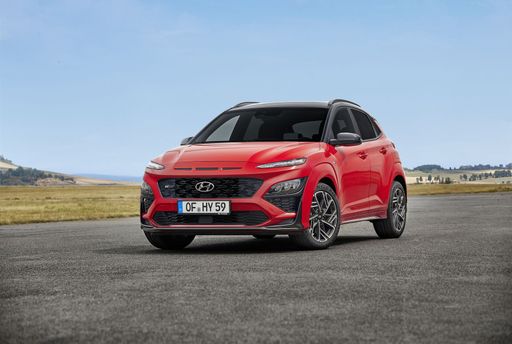 @ hyundai.news
@ hyundai.news
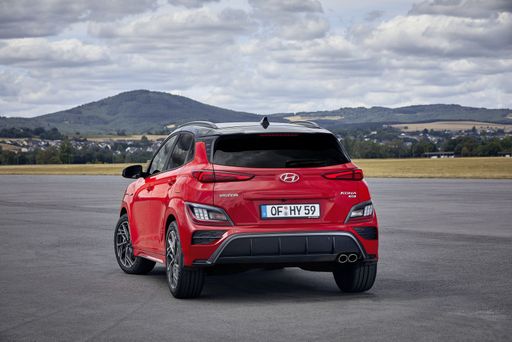 @ hyundai.news
@ hyundai.news
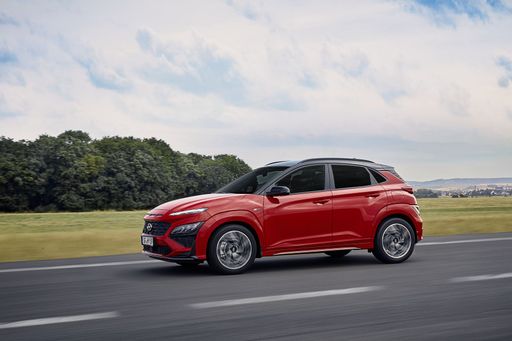 @ hyundai.news
@ hyundai.news
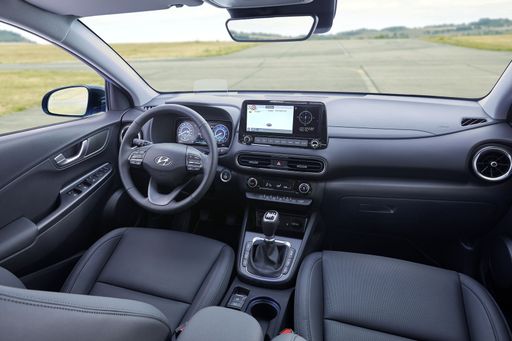 @ hyundai.news
@ hyundai.news
Polestar 4
The Polestar 4 embodies a seamless blend of cutting-edge technology and sophisticated design, establishing itself as a prominent contender in the modern electric vehicle market. Its elegant exterior lines are complemented by an interior that prioritises both luxury and sustainability, offering a serene driving experience. With its focus on innovation, the Polestar 4 continues to push the boundaries of performance, setting a new standard for what an electric car can achieve.
details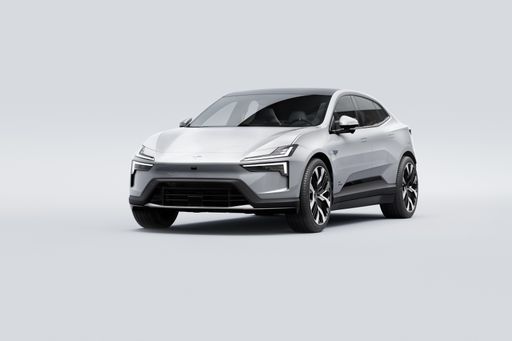 @ media.polestar.com
@ media.polestar.com
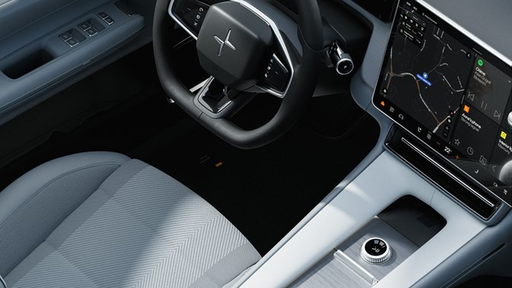 @ media.polestar.com
@ media.polestar.com
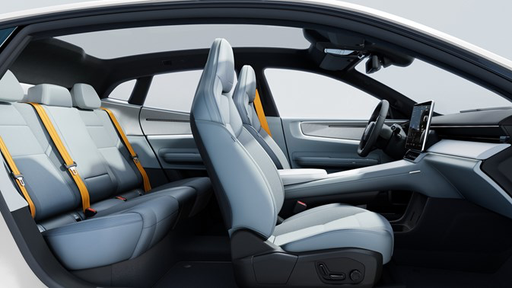 @ media.polestar.com
@ media.polestar.com

|

|
|
|
|
Costs and Consumption |
|
|---|---|
|
Price
23100 - 41600 £
|
Price
53100 - 59900 £
|
|
Consumption L/100km
4.5 - 6.9 L
|
Consumption L/100km
-
|
|
Consumption kWh/100km
14.6 - 16.8 kWh
|
Consumption kWh/100km
17.8 - 18.7 kWh
|
|
Electric Range
377 - 514 km
|
Electric Range
590 - 620 km
|
|
Battery Capacity
1.3 - 65.4 kWh
|
Battery Capacity
94 kWh
|
|
co2
0 - 157 g/km
|
co2
0 g/km
|
|
Fuel tank capacity
38 - 47 L
|
Fuel tank capacity
-
|
Dimensions and Body |
|
|---|---|
|
Body Type
SUV
|
Body Type
SUV
|
|
Seats
5
|
Seats
5
|
|
Doors
5
|
Doors
5
|
|
Curb weight
1370 - 1773 kg
|
Curb weight
2230 - 2355 kg
|
|
Trunk capacity
466 L
|
Trunk capacity
526 L
|
|
Length
4350 - 4385 mm
|
Length
4840 mm
|
|
Width
1825 mm
|
Width
2008 mm
|
|
Height
1580 - 1585 mm
|
Height
1534 mm
|
|
Payload
420 - 490 kg
|
Payload
455 kg
|
Engine and Performance |
|
|---|---|
|
Engine Type
Petrol, Full Hybrid, Electric
|
Engine Type
Electric
|
|
Transmission
Manuel, Automatic
|
Transmission
Automatic
|
|
Transmission Detail
Manual Gearbox, Dual-Clutch Automatic
|
Transmission Detail
-
|
|
Drive Type
Front-Wheel Drive, All-Wheel Drive
|
Drive Type
All-Wheel Drive, Rear-Wheel Drive
|
|
Power HP
100 - 218 HP
|
Power HP
272 - 544 HP
|
|
Acceleration 0-100km/h
7.8 - 13.3 s
|
Acceleration 0-100km/h
3.8 - 7.1 s
|
|
Max Speed
162 - 208 km/h
|
Max Speed
200 km/h
|
|
Torque
200 - 265 Nm
|
Torque
343 - 686 Nm
|
|
Number of Cylinders
3 - 4
|
Number of Cylinders
-
|
|
Power kW
74 - 160 kW
|
Power kW
200 - 400 kW
|
|
Engine capacity
998 - 1598 cm3
|
Engine capacity
-
|
General |
|
|---|---|
|
Model Year
2024
|
Model Year
2024
|
|
CO2 Efficiency Class
D, C, E, F, A
|
CO2 Efficiency Class
A
|
|
Brand
Hyundai
|
Brand
Polestar
|
Hyundai Kona
The Hyundai Kona: A Comprehensive Overview
The Hyundai Kona has established itself as a standout in the compact SUV segment, blending innovation with performance and style. As the automotive world moves towards more sustainable and efficient options, the Kona offers a variety of powertrains, from traditional petrol engines to full hybrids and all-electric models.
Powertrain Options and Performance
The Hyundai Kona's powertrain choices cater to a wide range of preferences. For petrol enthusiasts, the Kona offers a 1.0L T-GDI engine, delivering 100 PS, and a more robust 1.6L T-GDI variant with up to 170 PS. Those looking for efficiency without sacrificing power can consider the full hybrid model, offering 129 PS and an impressive consumption of 4.5 L/100km.
For a greener option, the all-electric Kona provides a compelling case. With battery capacities of up to 65.4 kWh, the electric Kona offers power outputs of 156 to 218 PS, and efficiencies as low as 14.6 kWh/100km, enabling an electric range of up to 513 km.
Technical Specifications and Innovations
Built on a robust platform, the Kona delivers versatility and reliability. With a choice between manual or dual-clutch automatic gearboxes, along with options for front-wheel or all-wheel drive, the Kona ensures a tailored driving experience. The handling is enhanced by the car's lightweight construction, balancing a 1370 to 1773 kg curb weight with dynamic performance.
The Kona's design doesn't compromise cargo space for style; it offers a generous 466 L boot capacity. With a relatively compact body, measuring 4350 to 4385 mm in length, the Kona easily navigates urban environments while still commanding a strong road presence with its 1825 mm width.
Efficiency and Eco-Friendliness
Hyundai is committed to reducing emissions, as evidenced by the Kona's CO2 efficiency ratings, which range from class A for electric models to class D for some higher-performance petrol variants. The focus on reducing environmental impact without sacrificing driving pleasure is notable throughout the Kona range.
Costing and Value
The Hyundai Kona offers commendable value for money. Pricing starts at €26,400 and reaches up to €50,690, depending on the chosen configuration. The monthly running costs range from €956 to €1090, with a cost per kilometre of 38.3 to 43.6 cents, making it a competitive option in its class.
Conclusion: Modern, Efficient, and Versatile
The Hyundai Kona stands as a testament to Hyundai's commitment to innovation, efficiency, and practicality. Whether you are inclined towards a traditional combustion engine, a hybrid for a balance of power and efficiency, or a full electric model for maximum eco-friendliness, the Kona provides a tailored solution for each unique driver preference.
Polestar 4
Introducing the Polestar 4: A New Era for Electric SUVs
The Polestar 4 marks a significant milestone in the realm of electric vehicles, epitomising cutting-edge technology and innovative design. This new player in the SUV market combines sustainability with high-performance capabilities, making it a desirable option for eco-conscious enthusiasts who refuse to compromise on power and luxury.
Impressive Power and Range
Under its sleek exterior, the Polestar 4 offers a choice between two powertrains. For those seeking maximum performance, the dual motor all-wheel drive configuration delivers an astounding 544 PS, propelling the vehicle from 0 to 100 km/h in a mere 3.8 seconds. Meanwhile, the rear-wheel-drive variant, equipped with a single motor, offers 272 PS and achieves 0 to 100 km/h in 7.1 seconds. Both versions boast impressive efficiency, with energy consumption figures of 17.8 to 18.7 kWh/100km, supporting a range of up to 620 km.
Advanced Battery and Charging Capabilities
Built on a robust 94 kWh battery, the Polestar 4 ensures extended travel without frequent charging stops. The advanced battery technology associated with this model not only offers longevity but also supports rapid charging times, making it convenient for long journeys and daily commutes alike. The electric SUV is a testament to Polestar's commitment to reducing environmental impact without sacrificing power.
Intelligent Design and Aerodynamics
With dimensions of 4840 mm in length, 2008 mm in width, and 1534 mm in height, the Polestar 4 is a spacious five-seater designed for comfort and functionality. The vehicle is meticulously crafted to optimise aerodynamics, reducing drag and enhancing efficiency. A generous boot capacity of 526 litres further adds to the practicality of this electric SUV, proving it is as versatile as it is stylish.
Innovative Interiors and Technology
Inside, the Polestar 4 boasts a minimalistic yet sophisticated cockpit, integrating cutting-edge technology with user-friendly features. The infotainment system is seamlessly designed to offer an intuitive user experience, providing drivers with easy access to navigation, entertainment, and vehicle diagnostics. Advanced safety features, powered by state-of-the-art software, ensure peace of mind for all occupants.
Commitment to Sustainability
Polestar continues to champion sustainability through its zero CO2 emissions target, offering the Polestar 4 with a CO2-efficiency class of A. The brand’s mission of promoting a greener future is embodied in this model, combining innovative materials and eco-friendly practices in its production processes.
Conclusion: A Glimpse into the Future of Driving
The Polestar 4 sets a new standard for what can be achieved in the world of electric SUVs. It is a perfect blend of luxury, performance, and sustainability, all packaged in a sleek and modern design. As we move towards a more electrified future, the Polestar 4 stands out as a beacon of what the automotive world can achieve when innovation meets ecological responsibility.
The prices and data displayed are estimates based on German list prices and may vary by country. This information is not legally binding.
